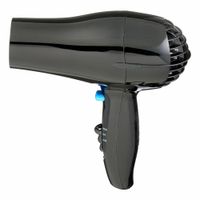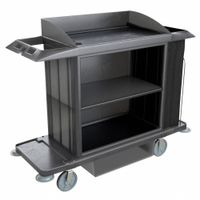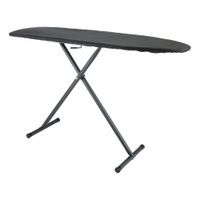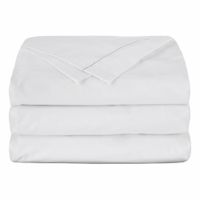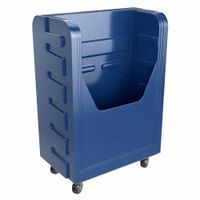Call +(254) 703 030 000 / 751 483 999 / 721 704 777
- Home
- Furnishings Appliances Hospitality
- Hospitality Supplies
- Housekeeping Supplies
Frequently Asked Questions
What are the essential housekeeping supplies needed for guestroom replenishment?
Essential housekeeping supplies for guestroom replenishment include:
1. **Linens and Bedding**: Fresh sheets, pillowcases, blankets, and duvet covers to ensure a clean and comfortable sleeping environment.
2. **Towels**: Bath towels, hand towels, and washcloths should be replaced daily or as needed.
3. **Toiletries**: Shampoo, conditioner, body wash, soap, lotion, and other personal care items like toothbrushes and toothpaste.
4. **Toilet Paper and Tissues**: Ensure an adequate supply of toilet paper and facial tissues.
5. **Cleaning Supplies**: Disinfectants, glass cleaner, multi-surface cleaner, and air fresheners to maintain cleanliness and hygiene.
6. **Trash Bags**: For replacing liners in wastebaskets and disposing of trash.
7. **Stationery**: Notepads, pens, and hotel information brochures for guest convenience.
8. **Beverage Supplies**: Coffee, tea, sugar, creamer, and stirrers for in-room beverage stations.
9. **Glassware and Mugs**: Clean glasses and mugs for guest use.
10. **Laundry Bags**: For guests to use for dirty laundry.
11. **Hangers**: Sufficient hangers for clothing storage in closets.
12. **Iron and Ironing Board**: Available upon request or placed in the room for guest use.
13. **Safety and Comfort Items**: Extra pillows, blankets, and a safe for valuables.
14. **Technology and Entertainment**: Remote controls, batteries, and instructions for using in-room technology.
15. **Miscellaneous Items**: Sewing kits, shoe polish, and other small amenities that enhance guest comfort.
These supplies ensure that guestrooms are well-stocked, clean, and comfortable, enhancing the guest experience.
How often should housekeeping replenish guestroom items like soap and shampoo?
Housekeeping should replenish guestroom items like soap and shampoo daily. This ensures that guests have a fresh supply of essential toiletries each day of their stay, enhancing their comfort and satisfaction. Daily replenishment is particularly important in hotels where guests may use these items more frequently, such as after workouts, swimming, or multiple showers.
For guests staying multiple nights, housekeeping should check the levels of these items during daily cleaning and replace them as needed. If a guest is staying for an extended period, it may be beneficial to provide larger bottles or additional quantities to reduce waste and ensure convenience.
In addition to daily replenishment, housekeeping should also respond promptly to any specific requests from guests for additional toiletries. This responsiveness can significantly improve the guest experience and demonstrate a commitment to excellent service.
For eco-friendly hotels, offering refillable dispensers instead of single-use bottles can be a sustainable alternative. In such cases, housekeeping should ensure that dispensers are regularly checked and refilled to maintain hygiene standards and guest satisfaction.
Ultimately, the frequency of replenishment should align with the hotel's service standards and guest expectations, ensuring that all guests have a comfortable and pleasant stay.
What is the best way to organize a housekeeping cart for efficiency?
To organize a housekeeping cart efficiently, start by categorizing items into cleaning supplies, linens, and amenities. Place frequently used items at the top for easy access.
1. **Top Shelf**: Store cleaning supplies like spray bottles, disinfectants, and cloths. Arrange them by type and frequency of use. Keep a small trash bag for waste.
2. **Middle Shelf**: Reserve this for linens. Stack towels, washcloths, and bed sheets neatly. Use dividers if possible to prevent them from toppling over.
3. **Bottom Shelf**: Place heavier items like vacuum cleaners, mops, and buckets. Ensure they are secure to prevent shifting during movement.
4. **Side Compartments**: Utilize side pockets for smaller items such as toiletries, soaps, shampoos, and toilet paper. Group similar items together for quick retrieval.
5. **Front Hooks**: Hang dusters and brooms on hooks for easy access and to save space.
6. **Labeling**: Clearly label each section to maintain organization and assist in quick restocking.
7. **Restocking Routine**: Develop a routine to restock the cart at the end of each shift, ensuring all items are replenished and ready for the next use.
8. **Safety and Ergonomics**: Ensure the cart is not overloaded to prevent strain. Keep heavier items at waist level to avoid bending and lifting injuries.
9. **Regular Maintenance**: Clean the cart regularly to maintain hygiene and functionality.
By following these steps, a housekeeping cart can be organized for maximum efficiency, reducing time spent searching for items and improving overall productivity.
How can hotels ensure the quality of linens and towels provided to guests?
Hotels can ensure the quality of linens and towels by implementing several key strategies:
1. **Supplier Selection**: Choose reputable suppliers known for high-quality products. Establish long-term relationships to ensure consistent quality and negotiate terms that allow for regular quality checks.
2. **Material Selection**: Opt for high-quality materials such as Egyptian cotton or bamboo, which are known for their durability and comfort. Ensure that the thread count is appropriate for the desired level of luxury.
3. **Regular Inspections**: Conduct regular inspections of linens and towels to check for wear and tear, stains, or damage. Implement a system for replacing items that no longer meet quality standards.
4. **Proper Laundering**: Use professional laundry services or invest in high-quality in-house laundry facilities. Ensure that the washing process uses appropriate detergents and temperatures to maintain fabric integrity and hygiene.
5. **Staff Training**: Train housekeeping staff on proper handling and storage techniques to prevent damage. Educate them on identifying items that need replacement or special attention.
6. **Inventory Management**: Maintain an adequate inventory to allow for regular rotation of linens and towels. This reduces wear and extends the lifespan of each item.
7. **Guest Feedback**: Encourage guests to provide feedback on the quality of linens and towels. Use this information to make informed decisions about replacements and improvements.
8. **Sustainability Practices**: Implement eco-friendly practices such as using biodegradable detergents and energy-efficient machines. This not only ensures quality but also appeals to environmentally conscious guests.
9. **Quality Control Systems**: Establish a quality control system that includes regular audits and assessments to ensure standards are consistently met.
By focusing on these areas, hotels can maintain high standards for linens and towels, enhancing guest satisfaction and overall experience.
What are the most effective laundry supplies for maintaining hotel linens?
The most effective laundry supplies for maintaining hotel linens include high-quality detergents, fabric softeners, stain removers, and bleach alternatives.
1. **Detergents**: Use commercial-grade detergents specifically formulated for institutional use. These detergents are designed to handle large loads and remove tough stains while being gentle on fabrics. Opt for those with enzymes to break down protein-based stains and surfactants for effective soil removal.
2. **Fabric Softeners**: Choose fabric softeners that not only soften but also reduce static cling and enhance the feel of linens. They should be compatible with the detergent used and safe for high-thread-count fabrics.
3. **Stain Removers**: Pre-treat stains with specialized stain removers before washing. Enzyme-based stain removers are effective for organic stains, while oxygen-based products work well on a variety of stains without damaging the fabric.
4. **Bleach Alternatives**: Use oxygen bleach as a safer alternative to chlorine bleach. It is effective in whitening and brightening linens without the harshness of chlorine, which can weaken fibers over time.
5. **pH Balancers**: Maintain the pH balance of the wash water to prevent fabric damage. A neutral pH is ideal for preserving the integrity and color of linens.
6. **Water Softeners**: If the water supply is hard, use water softeners to prevent mineral deposits on linens, which can make them feel rough and reduce their lifespan.
7. **Disinfectants**: Ensure hygiene by using laundry disinfectants that eliminate bacteria and viruses, especially important in a hotel setting.
8. **Drying Aids**: Use dryer sheets or balls to reduce drying time and static, ensuring linens remain soft and fluffy.
Regular maintenance of laundry equipment and adherence to manufacturer guidelines for each product will further enhance the longevity and quality of hotel linens.
How do hotels manage the inventory of housekeeping supplies and amenities?
Hotels manage the inventory of housekeeping supplies and amenities through a combination of strategic planning, technology, and efficient processes. They begin by forecasting demand based on occupancy rates, historical data, and upcoming events. This helps in determining the quantity of supplies needed, such as linens, toiletries, and cleaning products.
Inventory management systems are crucial, allowing hotels to track stock levels in real-time. These systems alert staff when supplies are low, ensuring timely reordering. Many hotels use barcoding or RFID technology to streamline this process, reducing human error and improving accuracy.
Hotels often establish relationships with reliable suppliers to ensure a steady supply of high-quality products. They negotiate contracts to secure favorable terms and bulk pricing, which helps in cost management. Some hotels also adopt just-in-time inventory practices to minimize storage costs and reduce waste.
Housekeeping staff play a vital role in inventory management. They conduct regular audits and maintain detailed records of usage and stock levels. This data is analyzed to identify trends and adjust ordering practices accordingly. Staff are trained to report discrepancies or damages immediately, ensuring swift resolution.
To optimize storage, hotels organize supplies in a centralized location with easy access for housekeeping staff. This setup minimizes time spent retrieving items and enhances operational efficiency. Additionally, hotels implement strict inventory control policies, such as limiting access to storage areas and requiring sign-outs for high-value items.
Sustainability is increasingly important, with many hotels opting for eco-friendly products and practices. This includes using bulk dispensers for toiletries and sourcing biodegradable cleaning supplies, aligning inventory management with environmental goals.
What are the best practices for maintaining hygiene and cleanliness in hotel rooms?
1. **Regular Cleaning Schedule**: Implement a consistent cleaning routine for all rooms, including daily cleaning and deep cleaning after each guest checks out.
2. **Use of Quality Cleaning Products**: Utilize high-quality, effective cleaning agents that are safe for both guests and staff. Ensure products are suitable for different surfaces and fabrics.
3. **Trained Staff**: Ensure housekeeping staff are well-trained in cleaning techniques, use of equipment, and safety protocols to maintain high hygiene standards.
4. **Attention to High-Touch Areas**: Focus on frequently touched surfaces such as doorknobs, light switches, remote controls, and bathroom fixtures, ensuring they are disinfected regularly.
5. **Linen and Towel Management**: Change bed linens and towels daily or upon guest request. Use hot water and appropriate detergents for laundering to ensure thorough cleaning.
6. **Ventilation**: Ensure rooms are well-ventilated to reduce the risk of airborne contaminants. Use air purifiers if necessary.
7. **Bathroom Sanitation**: Pay special attention to bathroom cleanliness, using disinfectants on all surfaces, and ensuring proper drainage and plumbing maintenance.
8. **Waste Management**: Empty trash bins daily and ensure proper disposal of waste. Use liners in bins to prevent contamination.
9. **Pest Control**: Implement regular pest control measures to prevent infestations and maintain a clean environment.
10. **Guest Information**: Provide guests with information on hygiene practices and encourage them to maintain cleanliness during their stay.
11. **Inspection and Feedback**: Conduct regular inspections to ensure compliance with hygiene standards and encourage guest feedback to identify areas for improvement.
12. **Use of Technology**: Implement technology such as UV light sanitizers or electrostatic sprayers for enhanced cleaning efficiency.
